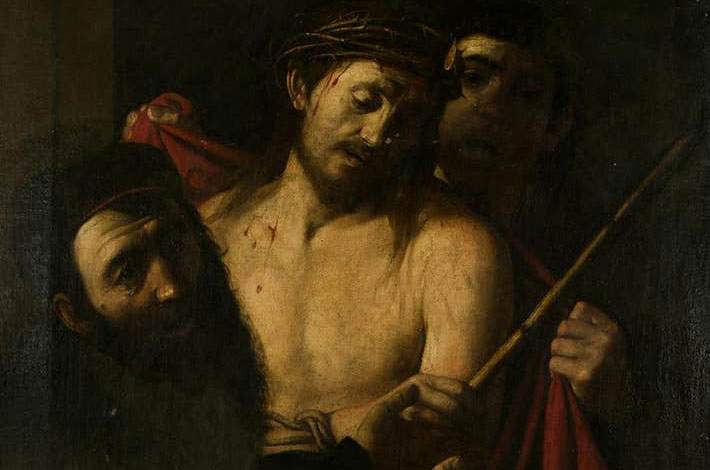Chances are increasing that theEcce Homo that was about to go up for auction at the Madrid-based Ansorena house for only 1,500 euros is actually a work by Caravaggio. To recap, in recent weeks the history of the painting had been reconstructed by going back to the early 19th century, and it was discovered that theEcce Homo attributed to Caravaggio had been given in 1823 by the Real Academia de Bellas Artes de San Fernando, following an exchange, to Evaristo Pérez de Castro (Valladolid, 1769 - Madrid, 1849), a politician, diplomat, and president of the council of Spain between 1838 and 1840. Since then, the work has always remained in the collection of the Pérez de Castro family.
Now an earlier passage has been traced. In fact, the EcceHomo has been identified with an Ecce homo de estilo de Carbajio (“Ecce Homo in the style of Caravaggio”), identical in size to the Ansorena one, and mentioned in the inventory of the little palace of the Casa de Campo (former hunting lodge of the Spanish royal family) drawn up between 1701 and 1703 after the death of King Charles II (Madrid, 1661 - 1700). And again, one finds an Ecceomo con dos figuras más, en dos mil reales. Estilo de Carbajio in the inventory of assets of the Casa de Campo drawn up between 1789 and 1794, after the death of Charles III (Madrid, 1716 - 1788). The work was also identified in Charles II’s will, again with reference to Casa de Campo’s assets, in which it mentions “otra pintura de un eccehomo de vara y media de alto” placed in the “alcoba de su majestad.”
 |
| Caravaggio (attr.), Ecce Homo (oil on canvas, 111 x 86 cm) |
The trail leading back to García de Avellaneda y Haro, count of Castrillo and viceroy of Naples between 1653 and 1659, thus takes more shape (we know that there was an Ecce Homo by Caravaggio in his collection: we have discussed this possible trail on these pages in aninterview with Rossella Vodret and in a further interview with Antonio Vannugli).
Revealing these new passages are Sol G. Moreno and Héctor San José who wrote about them in the Spanish art and collecting trade journal Ars Magazine. If we concede that the Salome with the Head of the Baptist that appears, along with theEcce Homo, in the inventory of the Count of Castrillo’s collection is the one now in the collections of the Prado in Madrid and that it came into the collection of the Spanish royals through a donation, by the count, to Philip IV of Spain, then it might be plausible, Moreno and San José state, that theEcce Homo (thus assuming that the identification of the painting with the one mentioned in the Casa de Campo inventory of 1701 is correct) was also donated by the Count of Castrillo to Philip IV.
However, one more piece of the mosaic is missing: how the work ended up at the Real Academia de Bellas Artes de San Fernando. According to the two authors of the piece, the number one suspect could be Joseph Bonaparte, Napoleon’s older brother, who was king of Spain between 1808 and 1813. Bonaparte, after the French occupation, lived for some time in the Casa de Campo, and probably there he may have known the painting. According to Moreno and San Jose, Bonaparte may have selectedEcce Homo for the design of his Museo Josefino, which was to consist of works from royal collections and the buildings of suppressed religious congregations. The museum never opened, however, and some of the selected paintings ended up in storage at the San Fernando Academy itself. Could theEcce Homo therefore be one of these paintings? According to Moreno and San Jose, the hypothesis is “more than likely.” Of course, for now it is little more than a hunch, still all to be verified, and so many clues do not make a proof, but the odds of attribution to Caravaggio, after this news, appear to be rising.
 |
| Ecce Homo, increasing possibility of it being by Caravaggio: is the work from royal collections? |
Warning: the translation into English of the original Italian article was created using automatic tools. We undertake to review all articles, but we do not guarantee the total absence of inaccuracies in the translation due to the program. You can find the original by clicking on the ITA button. If you find any mistake,please contact us.